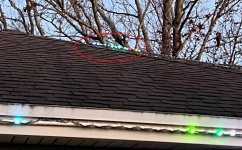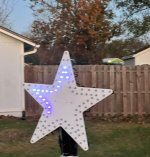TheLightWrangler
New member
Hey there, long time lurker, first time poster.
This is my 2nd year doing my home light show and I am having the absolute worst luck with my Pixels. I kind of assumed that I would get at least 3 seasons out of them before having to replace strings (12mm bullets and squares).
One pixel will fail and screw up the whole string. I've been successful in just replacing the 1 bad LED but it's getting out of control this year. I've had at least 6-8 strings give out or just stay on randomly or just change colors. I'll replace the bad pixel, then it just fails a few pixels down the line.
Is this the norm? I live in Florida and we've been getting pelted with bad weather this year, lots of wind and rain, but again, kind of assumed these things were meant to be out in the elements.
To make matters more laughable, my first set of pixels I bought from Amazon because I didn't know any better, haven't had a single failure out of those and they're actually on year 3, yet pixels bought from what I thought were reputable vendors are dropping like flies on year 2.
Really just wanted to see what you guys opinions on lifespan are because this has me second guessing continuing to do my show after having to spend days re-doing my roofline due to these failures. I know failures are to be expected, but I consider this pretty excessive.
This is my 2nd year doing my home light show and I am having the absolute worst luck with my Pixels. I kind of assumed that I would get at least 3 seasons out of them before having to replace strings (12mm bullets and squares).
One pixel will fail and screw up the whole string. I've been successful in just replacing the 1 bad LED but it's getting out of control this year. I've had at least 6-8 strings give out or just stay on randomly or just change colors. I'll replace the bad pixel, then it just fails a few pixels down the line.
Is this the norm? I live in Florida and we've been getting pelted with bad weather this year, lots of wind and rain, but again, kind of assumed these things were meant to be out in the elements.
To make matters more laughable, my first set of pixels I bought from Amazon because I didn't know any better, haven't had a single failure out of those and they're actually on year 3, yet pixels bought from what I thought were reputable vendors are dropping like flies on year 2.
Really just wanted to see what you guys opinions on lifespan are because this has me second guessing continuing to do my show after having to spend days re-doing my roofline due to these failures. I know failures are to be expected, but I consider this pretty excessive.




